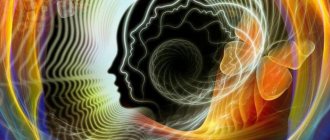Consultation via Skype or WhatsApp is available.
The feeling of anxiety is necessary for a person. It helps to mobilize in an emergency situation. But when excessive anxiety and fear begin to arise in the absence of a real threat or danger, then such a condition in medicine is called anxiety-phobic disorder. This is a disease in which harmless objects or phenomena cause a person to experience attacks of uncontrollable fear, panic and acute anxiety.
This pathological condition is characterized by the following symptoms that appear in a threatening situation:
- hot flash;
- cardiopalmus;
- pale skin;
- panic fear;
- dizziness, headache;
- nausea, vomiting;
- severe weakness in the limbs;
- dry mouth, lack of air.
A person is haunted by an anxious feeling of anticipation of trouble and is forced to constantly avoid formally dangerous situations. In most cases, with a long-term disorder, secondary depression occurs.
The external environment does not understand such people. Often ridicules their imaginary fears, which leads to feelings of guilt and worsening of the disease.
Treatment of anxiety-phobic disorders in Samara
Anxiety-phobic disorder (other names - obsessive-phobic disorder, obsessional neurosis, obsessive-phobic neurosis) is a neurotic disorder that causes phobias, obsessive (obsessive) states, sudden fears and thoughts. Obsessive states torment the patient, but he cannot get rid of them without outside help.
Causes of Anxiety Disorder
The causes of anxiety disorders are explained by several theories from a biological and psychological point of view.
Biological theories. According to these theories, the disease is explained as a kind of biological anomaly caused by certain changes in the body. The most popular version of the occurrence of anxiety disorders is an increase in the production of neurotransmitters.
We should not exclude the possibility that it is the locus coeruleus that is responsible for the symptoms of the disease. It is located in the brain, namely in the stem part of it, and with electrical stimulation it becomes the cause of anxiety and fear. Medications that reduce the activity of the locus coeruleus and therefore reduce anxiety include propranolol, clonidine, and benzodiazepines. In turn, medications like yohimbine increase anxiety.
Psychological theories. From the point of view of psychoanalysis, anxiety is a manifestation that signals the presence of a forbidden need or a certain impulse that needs to be hidden and prevented from expressing the need. According to this theory, the symptoms of anxiety disorders are explained as containing an unacceptable need within oneself.
Phobias and anxieties in general, from the point of view of behaviorism, are considered as a reflex reaction to the sudden or expected appearance of frightening or painful stimuli. The brain gets used to this reaction and soon anxiety begins to arise regardless of whether there is a stimulus or not.
More recently, cognitive psychology has emphasized erroneous and distorted mental patterns that precede the onset of anxiety symptoms. For example, with anxiety disorders, patients may react in panic to seemingly standard sensations and ailments in everyday life (palpitations, mild headache). As a result, fear intensifies, and over time it grows and leads to a powerful panic attack. In domestic medicine, anxiety disorders are classified as a group of functional neuroses (a more modern name is neurotic disorders). According to the traditional classification, the disease is classified as psychogenic, which is characterized by awareness of the disease, a variety of symptoms and manifestations, as well as a complete absence of changes in consciousness.
Obsessive-phobic disorder: risk group
People with certain qualities are predisposed to anxiety-phobic disorder: anxiety, low self-esteem, pedantry. At risk are perfectionists who constantly evaluate their activities and accompany them with a detailed mental algorithm, as well as psychasthenics who are prone to suspiciousness and excessive introspection.
It is extremely rare that anxiety-phobic disorder is found in people who tend to shift responsibility for what is happening to others, who do not spare others in order to achieve their goals, or who are aggressive.
The gender of a person does not matter for the statistics of the disease, but a certain age (teenagers and young adults, as well as the age preceding menopause) increases the risk of its development.
What is Anxiety Disorder
A person experiences various anxieties throughout his life.
As a rule, they are a reaction to stressful situations occurring in everyday life, at work, and so on. However, we can talk about anxiety disorder as a disease only in cases where systematic anxiety significantly affects a person’s quality of life and forces him to adjust his lifestyle. Symptoms of anxiety disorders are extremely unique and depend on the type of disease. Today, there are generalized disorder and adaptive disorder, which has an alarming increase. Generalized anxiety disorder is characterized by constant excessive anxiety that envelops the patient in almost any situation, even the most mundane. In turn, people with adaptive anxiety disorder have difficulty adapting to stressful situations. Constant fear, worry, tension and anxiety in this disease can affect the functioning of various organs and systems: a person may be subject to rapid heartbeat, shortness of breath, a “nervous” stomach, and so on.
Symptoms of the disease
Symptoms of anxiety-phobic disorder include:
- Panic attacks are a sudden strong fear of danger, death, causing autonomic disorders in the patient: dizziness, fainting, nausea, lack of air, tachycardia.
- Agoraphobia – fear of public places, crowds, the street.
- Hypochondriacal phobias are fear of the possibility of illness, intense search for symptoms, panic and confidence in the inevitability of illness at the slightest detection.
- Social phobias – fear of being evaluated by other people, fear of close attention from others.
- Other phobias: fear of heights, touching, confined spaces, elements, certain situations.
For a person prone to phobias to manifest them, it is enough to remember and imagine similar situations or a previous attack. Phobias tend to develop: embarrassment during speeches in front of the public or management, with the aggravation of obsessive states, is transformed into a fear of ordinary communication with well-known people.
Anxiety and its causes
Healthy people often feel anxious when exposed to many external factors. Anxiety during an exam, when family problems arise, an unexpected change in your usual lifestyle, or troubles at work can cause psychological stress and will quickly disappear once the difficult situation is resolved. However, there is a psychotype of people who are in a constant state of anxiety, regardless of external influences, or who react much more strongly to ordinary everyday troubles, falling into nervousness.
If you believe scientists, then such a symptom is inherited at the genetic level and can subsequently be clearly expressed in the case of improperly constructed intra-family relationships. In addition, psychologists argue that inflated self-esteem, which runs counter to a person’s real capabilities, is often the first step that creates anxiety. The sooner a person realizes the impending danger and begins effective treatment, the easier and faster the disease can be dealt with.
Course of obsessive-phobic neurosis
There are several variants of the course of anxiety-phobic disorder:
1) attacks of panic attacks, as a rule, are not accompanied by manifestations of other phobias;
2) a combination of panic attacks and persistent agoraphobia, while in the manifestation of panic attacks, strong fear prevails over the physical manifestations of the phobia. A person can take extreme measures (a complete change of activity, moving, changing contacts) to level out the possibility of new panic attacks;
3) vegetative manifestations of panic attacks prevail over the severity of fear and subsequently provoke attacks of hypochondriacal phobias.
Anxiety disorder - symptoms and treatment
- Generalized anxiety disorder
Generalized TD is a common disorder characterized by long-term anxiety that is not focused on any one object or situation.
People suffering from generalized TD experience nonspecific, persistent fear and become overly anxious about everyday activities. Generalized TR is “characterized by chronic excessive worry, accompanied by the following symptoms (at least three of the following are required to make the diagnosis): restlessness, fatigue, difficulty concentrating, irritability, muscle tension, and sleep disturbances.”[6]
Generalized TD is the most common anxiety disorder among older adults.[7] Anxiety can be a symptom of another medical condition or occur in association with substance abuse problems, which should be considered by the physician during diagnosis. The person may have trouble making daily decisions and remembering commitments due to lack of concentration/concern.[9] Externally, the patient looks tense, there is increased sweating of the hands, feet and armpits.[10] The person may be tearful, which indicates depression.[11] Before diagnosing an anxiety disorder, a physician must rule out drug anxiety and other medical causes.[12]
In children, this type of anxiety disorder may be associated with headaches, restlessness, stomach pain and palpitations. It usually begins between the ages of 8 and 9 years.[13]
- Phobic disorders
The single largest category of anxiety disorders is phobias, which include all cases where fear and anxiety are caused by a specific stimulus or situation. Between 5% and 12% of the population worldwide suffers from phobic disorders.[8] Patients typically anticipate terrifying consequences from encountering the object of their fear, which can be anything from an animal to a public place. Common phobias: air travel, blood, water, driving, tunnels. When people are exposed to a phobia, they may experience trembling, shortness of breath, or rapid heart rate.[14] People understand that their fear is not proportional to the actual danger, but still they cannot overcome it.[15]
- Panic disorder
In panic disorder, a person experiences brief episodes of intense fear and anxiety, often marked by trembling, confusion, dizziness, nausea, and/or difficulty breathing. Defined as fear or discomfort that occurs suddenly and reaches a peak in less than ten minutes, these panic attacks can last several hours.[16] Attacks can be caused by stress, irrational thoughts, general fear, or fear of the unknown. However, sometimes the trigger is unclear and therefore attacks can occur without warning. To prevent an attack, you must avoid the trigger. However, not all attacks can be prevented.
In addition to recurrent, unexpected panic attacks, a diagnosis of panic disorder requires that said attacks have chronic effects: either anxiety about the potential consequences of the attacks, persistent fear of future attacks, or significant changes in behavior associated with the attacks. Often, normal changes in the heartbeat noticed by patients make them think that something is wrong with their heart, and they may have another repeat panic attack.
- Agoraphobia
Agoraphobia is the fear of crowded places and open spaces. It is closely related to panic disorder and is often caused by the fear of having a panic attack. Manifested by the need to find a door or other escape route in a constant field of view. In addition to the fears themselves, the term agoraphobia is often used to refer to avoidance behaviors that often develop in patients with panic disorder.[18] For example, after a panic attack while driving, a person with agoraphobia may develop anxiety about driving and therefore avoid driving. This avoidance behavior can often have serious consequences and increase fear.
- Social anxiety disorder
Social TD (also known as social phobia) describes an intense fear and avoidance of negative social control, feelings of embarrassment, humiliation, or social interaction. This fear may occur in specific social situations (such as public speaking) or generally in most (or all) social interactions. Social anxiety often manifests itself with specific physical symptoms, including flushing, sweating, and difficulty speaking. As with all phobic disorders, those people who suffer from social anxiety will often try to avoid the source of the anxiety. In the case of social anxiety, this is especially problematic, and in severe cases can lead to complete social isolation.
- Post-traumatic stress disorder
Post-traumatic stress disorder (PTSD) was previously classified as an anxiety disorder (now, according to the foreign classification of mental disorders, PTSD has moved to traumatic and stressor-related disorders). It is the result of a traumatic experience. PTSD can be the result of an extreme situation such as combat, natural disaster, rape, hostage situations, child abuse, bullying, or even a serious accident. Anxiety disorder can also result from long-term (chronic) exposure to severe stress (for example, soldiers who endure individual battles but cannot cope with continuous combat).[19] People may experience sleep disturbances.[20] There are a number of treatments that form the basis of an anxiety treatment plan for those suffering from PTSD. Such treatments include cognitive behavioral therapy, psychotherapy, and support from family and friends.[8]
Research on PTSD began with Vietnam veterans as well as victims of natural disasters. These studies found that exposure to a natural disaster was the best predictor of PTSD.[21]
- Emotional disorders whose onset is specific to childhood
This type of AD involves feeling an excessive and inappropriate level of anxiety about being separated from another person or place. Anxiety disorders affect approximately 4% of children and 7% of adults, but they typically experienced severe psychological situations in childhood. In some cases, even a short separation can cause panic.[22][23] Treating your child early in the disorder can prevent further problems. Therapy includes teaching parents and families how to deal with this type of TD. Often parents increase anxiety because they do not know how to properly work with their child. In addition to parenting training and family therapy, medications such as SSRIs may be used to treat anxiety.[23]
- Situational anxiety
Situational anxiety occurs in connection with new situations or changing events. It can also be caused by various events that cause a person some discomfort. This type of TR is quite common. Most often, in specific situations, a person will experience panic attacks or high anxiety. A situation that makes one person feel anxious may not affect another person at all. For example, some people become anxious in crowds or small spaces, so being in a densely packed vehicle or store can cause them extreme anxiety and possibly a panic attack.[24] Others may experience anxiety when major life changes occur, etc.
- Obsessive-compulsive disorder
Obsessive-compulsive disorder (OCD), like post-traumatic stress disorder, was previously classified as an anxiety disorder according to the foreign classification of mental disorders. OCD is a condition in which a person experiences obsessions (anxious, persistent, and intrusive thoughts or images) and/or compulsions (urges to repeatedly perform certain actions or rituals) that are not caused by drugs or physical influences. This condition causes anxiety or social dysfunction.[25][26] Compulsive rituals are personal, individual rules that should be followed in order to relieve anxiety.[26] OCD affects approximately 1-2% of adults (more women than men) and less than 3% of children and adolescents.[25][26]
A person with OCD knows that the symptoms are unreasonable and therefore struggles with both thoughts and behavior.[25][27] Symptoms may be associated with external events that cause fear (imagining a house burning when thinking about what the person has forgotten turn off the iron) or worry about misbehavior.[27]
Behavioral, cognitive, genetic, and neurobiological factors may be involved in OCD.[26] Risk factors include family history, loneliness (although this can result from the disorder), higher socioeconomic class, or lack of paid employment.[26] About 20% of people with OCD will overcome the disorder and its symptoms with at least decrease over time in most people (another 50%).[25]
- Selective mutism
Selective mutism is a disorder in which a person who is able to speak does not speak in certain situations or when exposed to certain people. Selective mutism typically coexists with shyness and social anxiety.[28] People with selective mutism remain silent even when the consequences of their silence include shame, social ostracism (expulsion), or even punishment.[29] Selective mutism affects about 0.8% of people at some point in their lives.[2]
Psychotherapy in the treatment of obsessive-phobic neurosis
The activities of a psychologist in the treatment of anxiety-phobic disorder and manifestations of phobias are aimed, first of all, at reducing and completely eliminating anxiety, as well as at correcting behavior. Patients are taught relaxation and behavioral habits that exclude avoidance of certain situations. Psycho-emotional support therapy is used, as well as behavioral therapy, during which the patient learns not to succumb to fear in certain situations. Rational psychotherapy is also used, which includes an explanation of the course of the disease, forming the patient’s understanding and awareness of his illness, which will allow him not to succumb to its manifestations.
You can make an appointment with a psychologist by phone + 7 (846) 333-66-22.
Which doctor will help you cope with anxiety?
Whatever the reasons for the appearance and development of a phobia, you should consult a doctor as soon as possible so that the disease does not get out of control and lead to serious consequences. If anxiety does not go away within several days, and you cannot determine the cause of the condition, do not delay visiting the doctor. Treatment will be much more effective if the specialist has sufficient practical experience and good specialized medical education. If necessary, take all the tests and undergo a full examination, this will help you get a more complete picture and make treatment more productive and faster.
If necessary, the therapist can refer the patient for consultation to specialists. An endocrinologist or neurologist, cardiologist or psychotherapist will be able to conduct a full examination and identify the root cause of anxiety. Often, effective treatment of chronic diseases automatically leads to a change in psychosomatic state. If no chronic diseases are identified, and the person complains of hallucinations and an anxious decline in mood, it is necessary to seek help from a psychiatrist. If feelings of anxiety lead to loss of consciousness or strange tremors appear in the limbs, a visit to the doctor cannot be postponed. If the symptoms grow like an avalanche and are accompanied by pronounced pain, convulsions, and sudden surges in pressure, it is better to call a doctor at home. Remember that anxiety often leads people to commit suicide because their mental state becomes unbearable.
What is this
Anxiety disorder is a painful condition characterized by increased anxiety.
This is a large group of conditions that are heterogeneous in their causes and mechanisms of development: from mental disorders to overwork and reactions to stress. According to doctors and scientists, the prevalence of anxiety disorders is very high; almost every person has experienced anxiety that causes discomfort at least once in their life.
Read more about anxiety HERE.
Symptoms
All manifestations of anxiety disorder can be divided into three groups:
- Mental : feelings of fear, anxiety, panic, a feeling of impending disaster, obsessive thoughts of unpleasant content (fear for health, fear of death, fear of losing control, etc.), increased attention to one’s internal state.
- Physiological symptoms : insomnia, palpitations, shortness of breath, heaviness or discomfort in different parts of the body, fluctuations in pulse and blood pressure, dry mouth, sweating, urge to urinate, etc.
- Changed behavior : restlessness, reaching the point of throwing and trying to run, or immobility (stupor), forced posture during a panic attack; searching for non-existent diseases in oneself; constant “listening to yourself”; avoiding places and situations where anxiety occurred.
Causes
An important factor determining the possible development of an anxiety disorder is predisposition. Approximately 20% of people are born with a special mood in the nervous system, which predetermines such a personality trait as increased anxiety. These individuals are at high risk of developing anxiety disorders. The following conditions can trigger painful anxiety:
- Overwork : chronic stress, lack of sleep, starvation and exhaustion.
- Mental trauma.
- Hormonal disorders : hyperthyroidism, hypothalamic syndrome, increased activity of the adrenal glands.
- Diseases of the nervous system : encephalopathy, infections of brain tissue.
- Poisoning . Abuse of alcohol, drugs, sleeping pills or sedatives.
- Mental disorders : phobias, depression, neuroses, psychosomatic diseases, schizophrenia spectrum disorders.
Who is most susceptible to developing phobic neurosis and for what reasons?
This ailment can develop both as an independent disease against the background of existing specific character traits and temperamental characteristics, and as a complication of existing diseases - psychopathy, psychasthenia, alcoholism, drug addiction. Neurosis with fears can aggravate the course of diseases of internal organs (myocardial infarctions, strokes), oncological processes, endocrine pathologies. Both men and women are susceptible to phobic neurosis. The primary development of symptoms of the disease is characteristic of adolescence, as well as the transitional stage from maturity to old age. You can often observe phobias in women during menopause.
People's fears develop against the background of:
- chronic psychophysical fatigue and overstrain;
- received mental trauma;
- any long-term, debilitating disease;
- regular lack of sleep and poor nutrition;
Diagnosis of an anxiety disorder
The presence of the above symptoms does not yet indicate the disease. The diagnosis must be made by a psychiatrist, and in order for the specialist to recognize the problem and confirm the presence of the disease, the symptoms of anxiety disorders must bother the patient for at least 2-3 weeks.
Anxiety disorders diagnose . But identifying the type of anxiety disorder is quite problematic. The reason for this is similar symptoms in different types of disease. Its type and degree can be identified by analyzing the places and times of occurrence of symptoms. In general, in diagnosing anxiety disorders, the depression and anxiety scale, the Spielberger-Hanin test, the personality anxiety scale, and many others are used.
If you suspect an anxiety disorder, you need to gather yourself, adequately assess the situation and try to answer several questions for yourself:
- Are there feelings of fear and anxiety, problems with autonomic regulation and sleep disturbances;
- How long have the symptoms continued to bother you?
- Can the symptoms be associated with organic diseases? It is better to visit a doctor and check your health;
- Is there any systematicity in the appearance of symptoms (they happen in a certain place, under certain conditions, at a specific time, and so on).
Treatment
Therapy for anxiety disorder is selected individually, taking into account the characteristics of the patient. Treatment is carried out by a psychotherapist or psychiatrist (not a psychologist!). The basis of treatment for anxiety disorder is psychotherapy. In addition to psychotherapeutic assistance, the following are used:
- Pharmacotherapy. Taking medications can quickly relieve pathological anxiety, restore sleep and the functioning of the body’s autonomic system.
- Biofeedback therapy. A non-drug therapy method allows you to teach the psyche to independently reduce stress and anxiety.
- Physiotherapy: electro-sleep and electro-analgesia, magnetic therapy.
- L.F.K. (physical therapy), massage, manual therapy.
- Diet therapy.
- Music therapy, travel therapy.
- Sensory deprivation.







